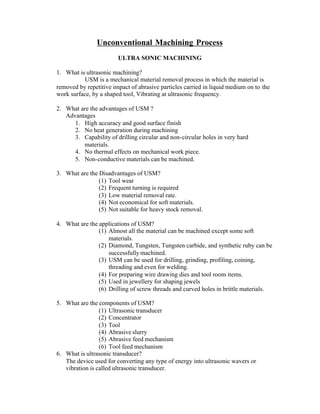Ultrasonic machining (USM) and abrasive jet machining (AJM) are unconventional machining processes. USM uses ultrasonic vibrations to cause abrasive particles in a liquid slurry to impact and remove material from a workpiece. It can machine very hard materials with high accuracy and no heat generation. AJM uses a high-velocity stream of abrasive particles in gas to erode material. It is useful for cutting brittle materials and can access difficult areas. Laser beam machining uses an intense laser beam to melt and vaporize material with precision and no physical contact.
















